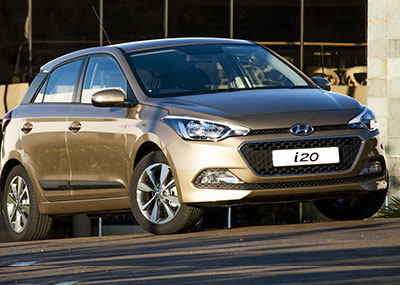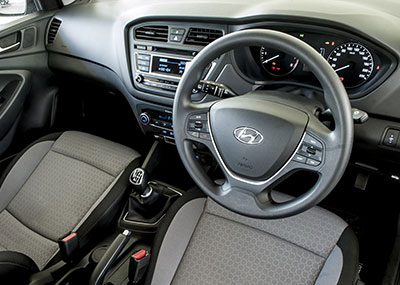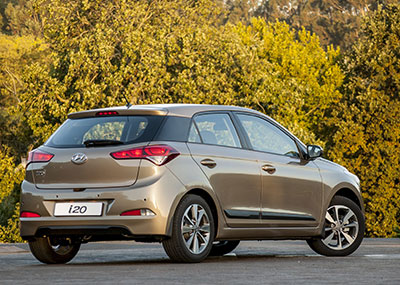Motoring: A little vanilla? The Hyundai i20
 The Hyundai i20 competes in a very significant segment of the market (the B segment) which includes a range of options from some adventurous vehicle manufacturers and some from manufacturers that prefer to follow a safer, non-offensive path.
The Hyundai i20 competes in a very significant segment of the market (the B segment) which includes a range of options from some adventurous vehicle manufacturers and some from manufacturers that prefer to follow a safer, non-offensive path.
Hyundai is one such manufacturer – the majority of the Korean manufacturer’s products are solid, unobtrusive and down-to-earth.
An example is the i20; and this is usually a good thing, as it means it will appeal to a broad range of buyers. Once again, though, with so much to choose from, is this more conservative approach enough?
While the overall design of the new i20 is comparatively plain compared to its contemporaries, it has to be said it is a great leap over the model it replaces. It doesn’t have the flair of the French Clio or 208, sophistication of the German Polo or Corsa, or style of the Japanese Mazda2. Rather, its own charm, brought about by smarter, more modish design elements – the blunt nose, blacked-out C-pillar and chic rear light clusters, for example.
The interior too is an improvement over its predecessor, with quality materials and a smart, premium ambiance buyers in this segment have come to expect.

However, the dashboard is overly black (more contrasting features would liven things up a bit) and there could be a few more “luxury” touch points on the top-spec 1.4 Fluid model we had on test … It’s amazing the difference a leather-wrapped steering wheel and gear knob can make.
The seats are very comfortable and the interior very spacious – the i20 really feeling among the larger vehicles in its class. There’s plenty storage space and the 294 l boot is easily accessed through a wide-opening hatch.
Feature wise, the i20 is average for its class – offering everything you do need and not much that you probably don’t. This includes follow-me-home “escort” lights; central locking with alarm/immobiliser; automatic climate control; a good sound system with USB, auxiliary and Bluetooth connectivity; a full onboard computer; and rear park assist.
Safety components include dual front airbags and Anti-lock Braking with Electronic Brakeforce Distribution.
Up to this point I’ve avoided reference or comparison to the i20’s cousin, the Kia Rio. The two cars are essentially identical in all but looks … except they’re not, because on the road they’re as different as can be. While the top-spec Rio TEC rides harshly and noisily, the i20’s ride is comparatively soft and comfortable. That’s not to the detriment of roadholding, either; with overall ride-and-handling capability about perfect for the everyday commute.
 Coupled to the six-speed manual transmission (as with the Rio, the sluggish four-speed automatic is best avoided), the 74 kW, 133 Nm 1,4-litre engine offers willing performance. It revs smoothly with good mid-range performance that results in easy town driving. It’s light on fuel, too, consuming a claimed 6,4 l/100 km in the combined driving cycle.
Coupled to the six-speed manual transmission (as with the Rio, the sluggish four-speed automatic is best avoided), the 74 kW, 133 Nm 1,4-litre engine offers willing performance. It revs smoothly with good mid-range performance that results in easy town driving. It’s light on fuel, too, consuming a claimed 6,4 l/100 km in the combined driving cycle.
Clearly, then, the new Hyundai i20 is a middle-of the road, vanilla-flavoured B-segment hatch. But, priced at R207 900 – with a standard five-year/150 000 km warranty; five-year/160 000 km perforation warranty; five-year/150 000 km roadside assistance; and three-year/60 000 km service plan – it offers good value for money. It may be one of the more conservative options in its class, but it’s a solid, more-than-the-sum-of-its-parts kind of car.
wow I like